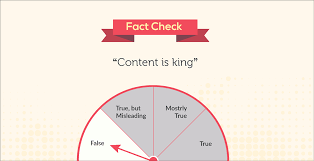Making Money Through Content Arbitrage 2025 Explained
Stephan 1 year ago
What is Content Arbitrage?
Content arbitrage refers to the practice of buying traffic at a lower cost from one source and monetizing it for a higher profit through ads or other forms of revenue generation. In simpler terms, it’s the digital marketing equivalent of buying low and selling high. The goal is to acquire visitors at a cost-effective price, direct them to content on a website, and generate more revenue from these visitors by displaying ads or promoting affiliate offers.
Also Read:- Ranking the Most Iconic Nike SB Dunks of All Time
This practice has become increasingly popular as a business model for many publishers and website owners. They purchase traffic from platforms like Facebook, Google, or other ad networks, send that traffic to content-heavy websites, and then rely on ad networks such as Google AdSense or direct deals with advertisers to monetize that traffic.
While the concept is simple, making content arbitrage successful requires a detailed strategy, effective targeting, and a deep understanding of traffic sources and monetization tactics.
Table of Contents
ToggleHow Does Content Arbitrage Work?
Content arbitrage is primarily a game of numbers and strategy. Here’s a breakdown of the process:
- Traffic Acquisition: The first step in content arbitrage is acquiring traffic at a lower cost. Digital marketers often use platforms like Facebook Ads, Google Ads, Taboola, or Outbrain to buy this traffic. They target audiences with a high potential to click on articles or ads, often using attention-grabbing headlines and thumbnails.
- Content Creation and Curation: The traffic is directed to a website or blog that hosts monetizable content. This content can be in various forms, such as articles, videos, or slideshows. The content should be engaging, relevant, and optimized for monetization through ads.
- Monetization through Ads: Once the visitors land on the content site, they are shown advertisements. These can be display ads (like Google AdSense), native ads, or affiliate offers. The goal is to earn more from these ads than what was spent to acquire the traffic.
- Profit Generation: If the cost to acquire traffic is less than the revenue generated from the ads, then the arbitrage model becomes profitable. For instance, if it costs $0.10 to bring a user to the site and the website earns $0.30 from ads shown to that user, the profit margin becomes clear.
Why Content Arbitrage is Popular
Content arbitrage has gained popularity in recent years because it allows website owners and digital marketers to capitalize on traffic without necessarily relying on organic search results or building a huge following. Here are some reasons why it’s appealing:
- Low Barrier to Entry: You don’t need to build a massive audience organically. As long as you have a solid understanding of ad platforms and content monetization strategies, you can start relatively quickly.
- Scalability: Once you find a working formula of low-cost traffic acquisition and high ad monetization, the model can be scaled quickly. You can invest more into paid traffic and drive larger numbers to your site.
- Predictable Revenue Streams: Unlike organic traffic, where growth can be unpredictable, paid traffic is consistent and scalable. As long as the arbitrage numbers (cost vs. revenue) work in your favor, you have a predictable business model.
Challenges of Content Arbitrage
Although content arbitrage can be highly lucrative, it’s not without challenges:
- Ad Fatigue: As more marketers get involved in content arbitrage, users are becoming increasingly desensitized to the types of ads and headlines used. This can result in lower click-through rates and less engagement.
- Platform Policies: Platforms like Google and Facebook are constantly updating their policies regarding ad quality, relevancy, and user experience. A change in policy can result in higher costs or even the suspension of accounts.
- Thin Margins: In many cases, the margins for content arbitrage can be quite thin. If your ad spend increases or your ad revenue decreases, profitability can quickly diminish.
- Traffic Quality: Not all traffic is equal. If you’re buying cheap traffic from non-relevant sources, the users may not engage with the ads or content, reducing the chances of making a profit. Poor traffic quality can also result in penalties from ad networks, further impacting revenue potential.
How to Make Content Arbitrage Work
To be successful with content arbitrage, it’s important to have a well-thought-out strategy and the ability to continuously test and optimize. Here are some tips:
- Focus on Quality Traffic: Although cheap traffic might be appealing, it’s important to focus on high-quality traffic sources. Platforms like Facebook, Google, and native ad networks offer detailed targeting options, which can help attract more relevant users. Quality traffic typically results in better engagement and higher ad earnings.
- Optimize Your Content: The content on your site should be engaging and encourage users to stay longer or click on more ads. Content should be well-written, visually appealing, and relevant to your target audience.
- A/B Testing Ads and Headlines: Constantly test different variations of your ads and headlines to see which perform better. Small changes in ad copy, images, or targeting can have a significant impact on your click-through rates and conversion rates.
- Track Key Metrics: Keep a close eye on your metrics, including cost per click (CPC), click-through rate (CTR), and earnings per click (EPC). These numbers will help you assess whether your arbitrage model is profitable. If the cost to acquire traffic is consistently lower than your ad revenue, you’re on the right track.
- Diversify Revenue Streams: Don’t rely solely on one monetization method like Google AdSense. Consider adding native ads, affiliate offers, or even direct ad sales to your site. Diversification can protect you if one revenue stream underperforms or gets restricted.
- Stay Updated on Ad Policies: Be aware of any changes in platform policies or ad quality requirements. Google, Facebook, and other major platforms are always refining their algorithms and ad quality standards, and staying in compliance will help avoid penalties and increased costs.
- Mobile Optimization: Many users consume content on mobile devices, so ensuring your site is mobile-friendly is crucial for keeping visitors engaged and generating ad revenue. A responsive design and fast load times can improve the user experience, reducing bounce rates and increasing ad viewability.
Tools and Platforms for Content Arbitrage
Here are some popular tools and platforms that can help with content arbitrage:
- Facebook Ads and Google Ads: For traffic acquisition, these two platforms provide some of the most advanced targeting and retargeting options available.
- Taboola and Outbrain: These native advertising platforms allow you to promote your content across a wide range of publisher websites, driving traffic back to your site.
- Google AdSense: A popular ad network that allows you to monetize your website with display ads.
- Ezoic: An AI-powered platform that helps publishers optimize ad placements for maximum revenue.
- PubPlus: A content arbitrage platform that helps media publishers manage their ad campaigns, optimize traffic, and maximize profitability.
The Future of Content Arbitrage
As digital marketing evolves, so does content arbitrage. With advances in artificial intelligence, machine learning, and ad platform algorithms, the future of content arbitrage looks promising. Marketers who can adapt to changes in technology, maintain high-quality traffic sources, and continually test their strategies will be well-positioned to thrive in the space.
However, it’s important to approach content arbitrage with caution. While it can be profitable, the model is highly dependent on external factors like traffic costs, ad platform policies, and audience behavior. To succeed in the long run, marketers must remain agile, willing to pivot strategies when needed, and focused on delivering a good user experience.
Conclusion
Content arbitrage is a business model that can generate substantial profits if executed properly. By understanding the mechanics of buying low-cost traffic and monetizing it effectively through ads, marketers can create a scalable, repeatable process. However, success requires constant optimization, strategic planning, and a focus on both traffic quality and content value.
If you’re considering venturing into content arbitrage, it’s important to remember that the model, while potentially lucrative, can also be challenging. Stay informed on the latest platform policies, continue testing and refining your approach, and always prioritize delivering quality content that resonates with your audience.





